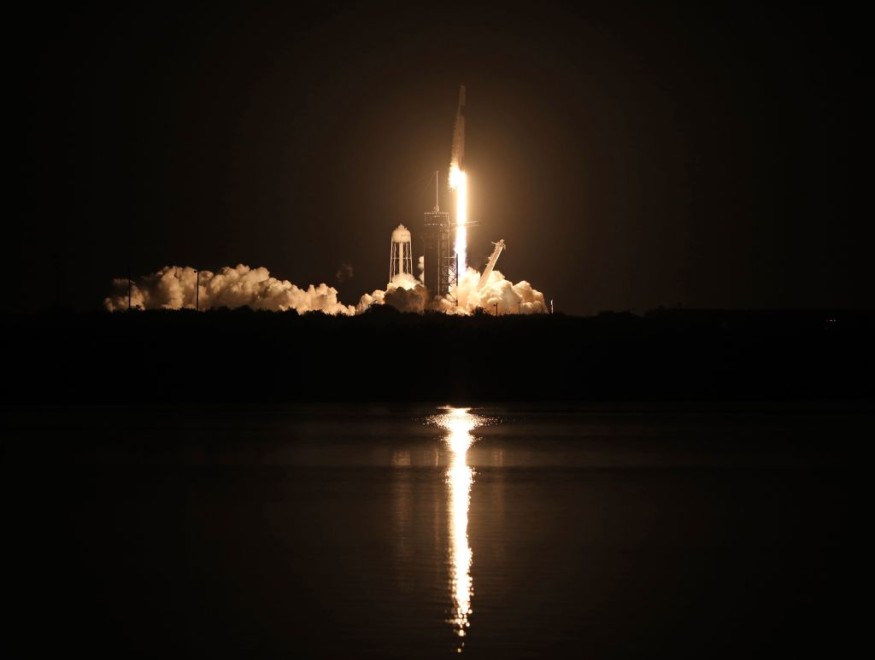A SpaceX Falcon 9 rocket blasted off from NASA's Kennedy Space Center (KSC) in Florida, delivering a robotic Dragon resupply vehicle in the direction of the International Space Station (ISS) Thursday evening.
The CRS-25 mission launched tonight from KSC's Launch Complex 39A at 8:44 p.m. EDT. The two stages split apart 2.5 minutes into the flight of the Falcon 9.
The main booster of the rocket started its return to Earth while the rocket's second stage sent Dragon into orbit. About 7.5 minutes after launch, the main booster made a successful landing in the Atlantic Ocean on SpaceX's A Shortfall of Gravitas droneship.
The 25th cargo mission that SpaceX has flown for NASA, CRS-25, will spend 33 days docked at the International Space Station. Nearly all of the payload on the spaceship when it was launched will be returned to Earth.

SpaceX Falcon 9 Launches 5,800 Pounds of Supply to ISS
About 5,800 pounds (2,630 kg) of supplies and equipment were stored within the Dragon capsule, BGR wrote. Since early June, preparations have been underway for the mission, formally known as Commercial Resupply Services 25, or CRS-25, by NASA. However, the initial launch was postponed as engineers found elevated hydrazine levels in the propulsion system.
The initial SpaceX flight was subsequently postponed a second time so that the company could repair certain rocket system gear and carry out additional checks. NASA has postponed the SpaceX launch and delivery of those essential supplies to the ISS.
There has been long-standing anticipation of the launch on Thursday. CRS-25's first launch date was set for June 10. However, technicians found elevated hydrazine vapor levels in the propulsion system of the capsule. The Draco engines of Dragon are powered by hydrazine.
NASA (via SciTechDaily) cited the"ongoing Dragon spacecraft inspections as well as repair and replacement of any components that could have degraded by exposure to mono-methyl hydrazine (MMH) vapor found during testing in early June" for the delay.
What's In The Payload?
According to Space.com, the weight of the payload of CRS-25 is roughly divided by scientific equipment. The Earth Surface Mineral Dust Source Investigation is one of the mission's large experiments, both in terms of its physical size and the breadth of the purpose (EMIT). The object, roughly the size of a cooking oven is traveling in Dragon's trunk. According to NASA officials, EMIT will be attached to the ISS as an external payload and used to determine the mineral makeup of dust in the planet's driest regions.
EMIT will concentrate on how wind-borne dust from certain of Earth's dry areas affects the planet's general climate system is currently unknown ways. Researchers will be able to anticipate weather patterns, increase agricultural yields, and conduct other climate studies by better understanding the makeup and function of the minerals in these samples.
One of the experiments now en route to the orbiting lab is an inquiry into the creation of biopolymer concrete in microgravity utilizing "in situ" materials like lunar regolith or Martian dust. The immunosenescence project, a different study, will look at how aging affects cells' capacity to repair bodily tissues and if it's possible to reverse such effects in astronauts after travel.
RELATED ARTICLE : SpaceX to Reuse Dragon Spacecraft Fleet After Rocket Booster from NASA Crew-1 'Leaned'
Check out more news and information on SpaceX in Science Times.
© 2025 ScienceTimes.com All rights reserved. Do not reproduce without permission. The window to the world of Science Times.










